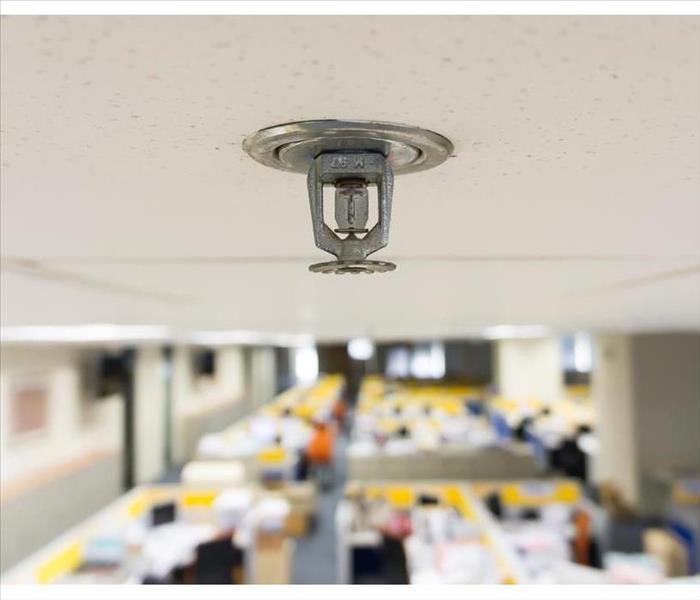3 Misconceptions About Fire Sprinkler Systems
12/29/2019 (Permalink)
3 Misconceptions About Fire Sprinkler Systems
Fire sprinkler systems can help reduce fire damage to a building by dousing fires when they first start before they can spread. Sprinkler systems are common in commercial buildings but there are some misconceptions about how they work.
1. Sprinkler Systems Don't Detect Smoke
Fires cause the air above them to rapidly increase in temperature. Sprinkler systems are activated when they come into contact with air that has been heated between 135 and 165 degrees. That air then rises and spreads, where it contacts the sprinkler heads. Most sprinklers utilize a glass bulb filled with a glycerin-based liquid, which expands and then shatters when the air temperature exceeds the threshold.
2. Sprinklers Don't Sprinkle Water
The water a fire sprinkler system uses isn't just sprinkled over a fire. Instead, the water is pressurized. Pressurized water sprays out in an arc, which helps it to reach a larger surface area and more effectively put out the fire.
3. Sprinkler Systems Don't Usually Cause a Lot of Water Damage
If you've ever seen someone set off the sprinkler systems in a movie, you might be expecting a small amount of fire to result in a large amount of water being sprayed in your building. However, sprinkler heads are designed to function independently. Most fires only trigger one or two sprinkler heads, which helps confine any water damage in the area where the fire started. Sprinkler systems can actually reduce water damage from putting out fires because they often require less water to put out a fire than fire hoses from the fire department.
Fire sprinkler systems can be a valuable part of the fire suppression system in your commercial building. They can also help reduce water damage that results from putting out a fire. If you need help cleaning up fire or water damage in your building, consider contacting a fire sprinkler cleanup specialist in Edmond, OK.



 24/7 Emergency Service
24/7 Emergency Service
